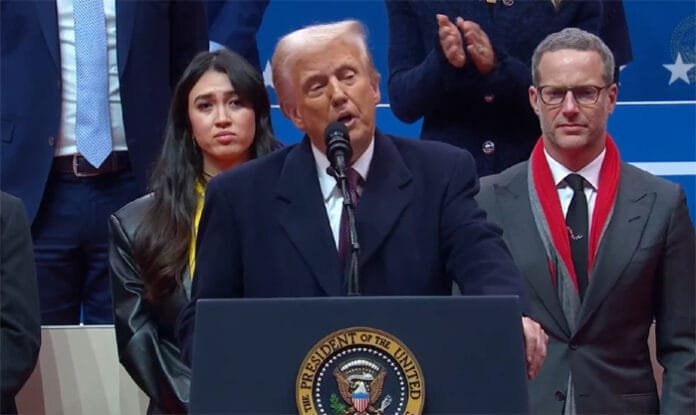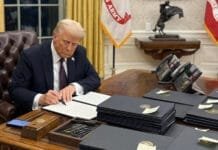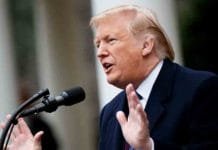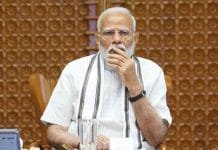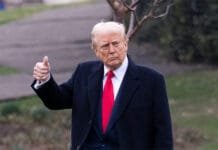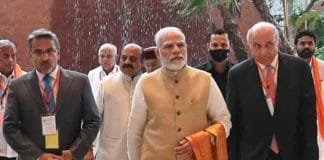Trump Escalates Trade Tensions: 50% Tariff on India Sparks Global Concerns
In a sharp escalation of the ongoing trade standoff, U.S. President Donald Trump has not only enforced a 50% total tariff on Indian goods, but also issued fresh threats of additional sanctions over India’s continued oil imports from Russia. This aggressive move comes at a time when geopolitical tensions are already high due to the prolonged Russia-Ukraine conflict, and it signals a new level of strain in India-U.S. bilateral relations.
Trump Imposes Additional 25% Tariff on Indian Goods
Just hours before the previously announced 25% tariff was set to take effect on August 7, President Trump signed an executive order to double down with an additional 25% tariff, bringing the total levy on Indian exports to 50%. This comprehensive tariff package is being positioned by the White House as a punitive response to India’s unwavering stance on continuing to import Russian oil.
According to U.S. officials, the goal is to cut off funding that indirectly supports Russia’s military efforts in Ukraine. However, this unilateral move has drawn sharp criticism from New Delhi, which has categorically described the tariff as “unjust, unfair, and unreasonable.”
Trump Warns of ‘Many Additional Sanctions’
During an impromptu press conference in the Oval Office, Trump took a combative tone when questioned about his decision to target India while other nations like China also continue to purchase Russian oil. His cryptic reply—“It has only been eight hours. Let’s see what happens. You will see a lot more”—has triggered alarm among analysts who foresee wider economic fallout if more countries are targeted in a similar fashion.
When asked whether China could face similar measures, Trump responded, “That can happen. It depends on how we do it. We’ve done this with India. We are probably doing this with some other countries as well, one of which may be China.” The vague and open-ended nature of his statement underscores the volatile unpredictability of current U.S. trade policy under his administration.
India Labels Tariff Move as Discriminatory
India’s Ministry of External Affairs (MEA) has condemned the U.S. action, emphasizing that its energy procurement policies are market-driven and strategically necessary to secure the country’s energy future. “India’s energy imports are based on market factors and national security interests. The imposition of a 50% tariff is unjustified,” the official MEA statement noted.
The statement further stressed that India will take all necessary steps to safeguard its economic sovereignty, and hinted at possible retaliatory measures if the tariffs are not withdrawn or modified through mutual dialogue.
Timeline of Escalation: How the Tariff War Unfolded
The U.S. administration’s sudden and severe tariff action was not without warning. Here’s a timeline of events that led to the current trade friction:
July 30: Trump announces an initial 25% tariff on Indian exports, citing continued oil imports from Russia as the primary reason.
August 1: The scheduled implementation date of the initial tariff is postponed to August 7, allowing room for preliminary discussions.
August 6: Trump warns of “very high tariffs” on India within 24 hours.
August 7: Less than 14 hours before the first tariff is to take effect, an executive order imposes an additional 25% tariff, taking the total to 50%.
August 25: A U.S. delegation is expected to arrive in New Delhi for bilateral trade negotiations.
August 27: The new 25% additional tariff is scheduled to go into effect.
This carefully choreographed sequence reveals a strategy designed to pressure India into trade concessions while keeping diplomatic dialogue technically open.
Impact on Indian Export Sectors
The 50% tariff will severely affect key Indian sectors that heavily rely on U.S. markets:
Textiles and Apparel: One of the largest sectors exporting to the U.S. will now face significant cost burdens.
Automobile Components: Tariffs may hit India’s growing auto component exports.
Pharmaceuticals: While some essential drugs may be exempted, the broader pharma export sector is expected to suffer.
Steel and Aluminum: Already under stress from global overcapacity, this sector now faces crippling levies.
Agricultural Products: Basmati rice, spices, and tea exports will likely see reduced competitiveness in U.S. markets.
This move not only jeopardizes India’s $100 billion export economy, but also has direct implications for millions of Indian workers dependent on export-oriented industries.
Energy Security vs. Global Pressure
India has repeatedly emphasized that its oil imports are based on economic and energy security needs, not geopolitical alignment. The Indian government has maintained that Russian crude—offered at discounted rates—helps cushion the impact of volatile global oil prices.
While the United States views these imports as undermining Western sanctions, India insists on maintaining a non-aligned, independent foreign policy. The current tariff measures are thus viewed in New Delhi as attempts to coerce sovereign policy decisions.
U.S. Delegation to Visit India Amid Tariff Firestorm
Despite the hostile rhetoric and punitive tariffs, the U.S. administration has kept diplomatic doors open. A U.S. trade team is scheduled to visit India on August 25 to restart stalled bilateral trade agreement talks. Whether this will lead to a de-escalation of tariffs or further hardening of positions remains uncertain.
Experts believe the timing of the visit—just two days before the additional 25% tariff becomes effective—suggests room for last-minute negotiations. However, any outcome will likely depend on how strongly India defends its energy policy and whether Trump’s administration is willing to compromise on its hardline stance.
Geopolitical Ramifications Beyond Trade
This escalation between the world’s two largest democracies has broader geopolitical consequences:
Strained Defense Cooperation: U.S.-India defense deals may face delays if diplomatic friction intensifies.
Strategic Partnerships at Risk: India’s role in Quad (India, U.S., Japan, Australia) may be impacted if trust erodes.
Shift in Global Alliances: A prolonged trade war could push India closer to other major powers like Russia and China.
Global Supply Chain Disruption: With India being a major manufacturing hub, American importers will face rising costs and delays.
Conclusion: A Trade War With No Clear Endgame
With Trump’s unpredictable trade policies and India’s resolve to defend its sovereign energy decisions, the stage is set for a high-stakes diplomatic confrontation. While both sides continue to engage through formal channels, the imposition of a 50% tariff is a drastic step that cannot be easily undone.
As the August 27 deadline looms, all eyes are on the upcoming trade negotiations. Whether this situation evolves into a mutually agreeable resolution or a long-drawn tariff war will depend on the outcomes of these crucial talks.
One thing is certain—India-U.S. trade relations have entered their most challenging phase in recent history.

